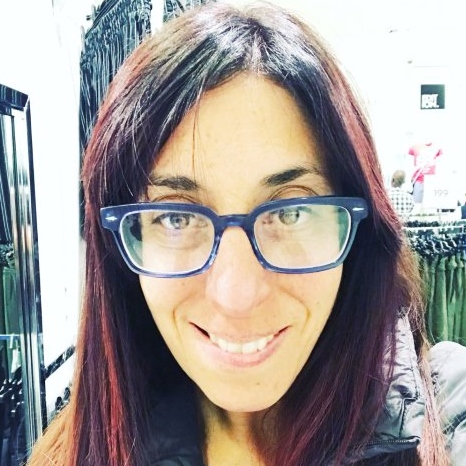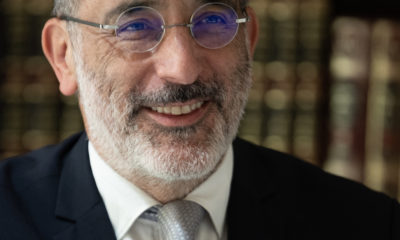
Parshot/Festivals

Shofar alerts us to present possibilities, not future peril
Nothing quite heralds the arrival of Rosh Hashanah like the sweet, hopeful scent of jasmine. This year, however, not all the sweetness of jasmine, apples, and honey is quite enough to do away with a certain quiet gloom that ripples through our community, gloom which comes from the devastating third wave to the terrifying protests, not to mention load-shedding and other perennial South African challenges of crime, poverty, and service delivery. I have heard many a conversation recently where the underlying claim has been, “There is no future here.”
We are lucky to have an Yda Walt print in our home of one of the main shuls that once thrived in Kovno, Lithuania. Its beautiful black-and-white image reminds me of where we came from, how our Jewish world was destroyed and then born again in South Africa, giving rise to a community that’s hailed as one of the most supportive and effective in the Jewish world. Although I don’t turn a blind eye to the complex problems facing our society, I’m struck by how we re-created this very special reality in South Africa, and that each one of us has the chance to continue to be co-creators of this reality – or not. Either way, language matters. The statement, “there is no future here”, isn’t just destructive to people who choose to remain here, it’s also not a Jewish way of seeing things.
At no time is this more prescient than on Rosh Hashanah. Although we reflect on our past year through the high holy days, Rosh Hashanah invites us into evaluation of where are now, in the present moment, and compels us to be open to the possibilities of life, instead of claiming to pronounce on the future. Indeed, every action in the present moment is within our control, while the future is in the hands of G-d.
The Talmud teaches that we blow the shofar at this time “le’arbev hasatan” (to confuse the accusing angel). As we present our good deeds to G-d, the accusing angel tries to divert G-d by pointing out our flaws. However, something about the shofar’s call distracts the Satan, giving us the opportunity to present our case to G-d without, as it were, interruptions.
A Hasidic reading of the root of the word “Satan” turns the image of the accusing angel into something us moderns might relate to. The word for distraction in Hebrew is “listot”, which seems to share the same root as Satan. From a modern point of view, Satan could be regarded as the angel of distraction, who pulls us away from the present moment. Satan diverts our focus. Distraction can assume many forms: it can be endless scrolling through social media, it can be regret about the past, or endless worry about the future. Distraction pulls us from the “power of now”, to reference one of Oprah Winfrey’s favourite self-help gurus, Eckhart Tolle.
If Satan distracts, the simple, atonal and amelodious sound of the shofar is without distraction. Like a winter tree stripped of all its leaves, the shofar is rid of frills and reduced to essence. In its bareness, its sense of nothing, we are neither in the past nor in the future. If we can truly connect to the emptiness of its sound, anything becomes possible. The sound of the shofar never says, “There is no future”. Rather, it says, “Hayom harat olam” (Today, the world is conceived). With my actions, my thoughts, my attitude, I can participate in the unfolding of the world and in the shaping of my reality.
Rabbi Levi Yitzchak of Berditchev says this is why Rosh Hashanah takes place at the end of summer, when the harvest granaries are full and the work has been done. He describes the spiritual state of such fullness using the paradoxical term of ayin (emptiness or nothingness). We have our harvest and all is complete. Berditchev explains it in the following way: it’s as if when we are bursting at the seams, there’s no space for the specifics of new life to enter. The concept of ayin is also a term for G-d. G-d is so filled with infinite possibility that G-d requires the specific wishes and hopes of humans to bring infinity – the ayin – into reality. Yitzchak explains that humans initiate the conception of the world each year. It’s our requests, our hopes, and dreams that reach into the ayin, the fullness of existence, and set in motion the particular responses of the universe, of the creator. The Esh Kodesh shares a similar idea. Citing the great Kabbalistic work of the Zohar, he says the work delatatah (of below) arouses the work of de’la’ilah (of above).
We aren’t in charge of what will happen in this or that country, we don’t know what will happen with viruses, or with dissident party factions. But as Jews, we work with an assumption that our deeds have an impact, and that our thoughts and beliefs can be self-fulfilling. Teshuva, tefillah and tzedakah, self-examination, introspection, and right action can reverse the evil decree. Rosh Hashanah consists of Jewish spiritual practices that open up possibilities instead of delimiting futures.
The ayin, the empty potential of Rosh Hashanah, presents to human beings a great spiritual invitation. Every time we hear the shofar, we can connect to that ayin and bring it down into our world in specifics. It’s deeply moving to consider the largely Lithuanian Jewish community which transplanted to South Africa and re-birthed in the forms of schools, shuls, South African activists, Limmud conferences, and Jewish communal organisations.
Hayom harat olam – we have created new worlds in South Africa. So, let’s be careful before we utter, “there is no future here”. Rather, let’s set our thoughts, prayers, and intentions to appreciate what we have, and ask for what we want. Let’s tune in to the call of the shofar, and participate in the unfolding of a full and good future, wherever we may find ourselves.
• Adina Roth is a clinical psychologist in private practice, and a teacher of Jewish Studies.










